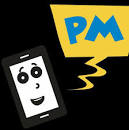In today’s hyper-connected world, screen time has become an unavoidable part of daily life. From smartphones and tablets to computers and smart TVs, screens are everywhere — and so is social media. While technology offers many conveniences, it also poses significant risks when overused, especially for children.
Even before the COVID-19 pandemic, screen time was on the rise. But post-pandemic, digital dependence has skyrocketed, contributing to a host of mental and physical health concerns, including sleep disorders, social isolation, obesity, cyberbullying, and increased anxiety.
Bayhealth Pediatrician Dr. Adaobi Enekwizu shares her insights on how families can cut down on screen time and develop healthier, more balanced media habits. These strategies are not just for kids — they’re meant for the whole family.

Why Screen Time Management Matters
The Health Effects of Excessive Screen Use
Spending too much time on screens has been linked to a range of issues in children and adults alike:
- Sleep disruption: Blue light from screens interferes with the production of melatonin, a hormone necessary for sleep.
- Behavioral issues: Increased screen exposure can lead to attention problems and mood swings.
- Mental health challenges: Screen overuse, especially social media, can contribute to anxiety, depression, and poor self-esteem.
- Obesity and inactivity: Sedentary behaviors related to screen use can lead to weight gain and physical inactivity.
- Cyberbullying: More time online increases exposure to harmful interactions and cyber threats.
How to Build a Family Media Plan
What Is a Family Media Plan?
A Family Media Plan is a customizable strategy that helps set boundaries and promote healthy digital habits. The American Academy of Pediatrics offers a free, interactive tool at HealthyChildren.org/MediaUsePlan to get started.
How It Helps
- Encourages screen-free zones in the home.
- Defines daily screen time limits based on age.
- Encourages alternative activities like reading, family games, or outdoor play.
- Promotes accountability among all family members, including parents.
Tips to Implement a Family Media Plan
- Involve everyone in creating the plan — including kids.
- Print and post it in a visible spot like the fridge.
- Reward goal completion with quality family time, like a picnic or game night.
- Review and revise the plan as needed to keep it relevant and effective.
Sleep and Screen Time: Why It Matters
The Connection Between Screen Time and Poor Sleep
Dr. Enekwizu emphasizes that both children and adults need consistent, high-quality sleep. But excessive screen time — particularly in the evening — interferes with the body’s natural wind-down process.
Digital Curfew: No Screens Before Bedtime
Create a family rule of no screens at least one hour before bedtime. This gives the brain and body a chance to decompress and encourages natural melatonin production. Try reading a book or listening to calming music instead.
Keep Bedrooms Tech-Free
Make bedrooms a screen-free zone. This separation of sleep and tech helps associate the bedroom with rest, not stimulation. Consider having a central charging station outside the bedrooms where everyone parks their devices before bed.
Be the Role Model: Parents Set the Tone
Kids mimic what they see more than what they’re told. Dr. Enekwizu notes that parents must model healthy screen behavior by:
- Putting the phone down during dinner and conversations.
- Choosing to engage in non-screen-related activities like exercise or hobbies.
- Acknowledging their own screen struggles and working on self-discipline alongside their children.
Replace Screen Time With Connection
Ideas for Screen-Free Family Time
- Cook dinner together as a family.
- Go for evening walks or bike rides.
- Plan weekend outings or family game nights.
- Encourage creative projects like arts and crafts, puzzles, or DIY builds.
How to Talk to Your Kids About Screen Limits
Open communication is essential. Don’t just enforce rules — explain why screen limits matter. Make them a part of the discussion when setting boundaries, and focus on how reducing screen time can lead to more family bonding, better health, and improved focus.
FAQs
Q1. What is a Family Media Plan and how do I start one?
A Family Media Plan is a personalized approach to managing screen time and digital content in your household. You can create one using the tool available at HealthyChildren.org, which helps define screen time limits, set screen-free zones, and encourage healthy habits.
Q2. How much screen time is too much for kids?
The American Academy of Pediatrics recommends no more than 1 hour of screen time per day for children ages 2–5, and consistent limits for older kids. The key is to balance screen use with physical activity, sleep, and face-to-face interaction.
Q3. Why are screens before bed a problem?
Screens emit blue light, which disrupts melatonin production and delays the body’s natural sleep cycle. This can lead to difficulty falling asleep, staying asleep, and feeling rested in the morning.
Q4. Can parents reduce their screen time too?
Absolutely. Parents are role models, and reducing their own screen use helps encourage children to follow suit. Replace screen use with interactive activities or quiet time in the evening.
Q5. What are some fun alternatives to screen time?
Consider puzzles, board games, reading, outdoor sports, baking, crafting, or volunteering as a family. These activities build stronger relationships and support emotional development.




